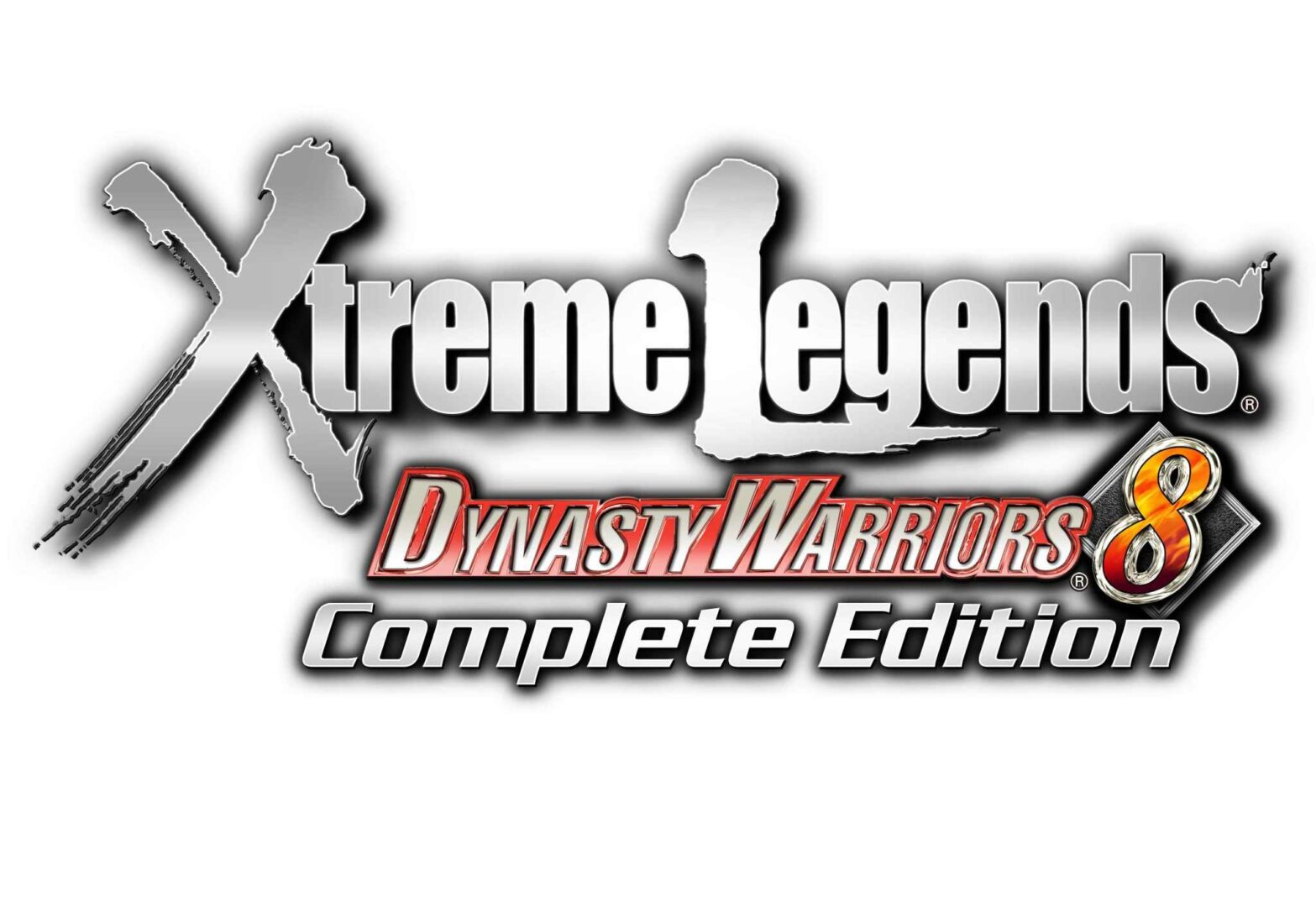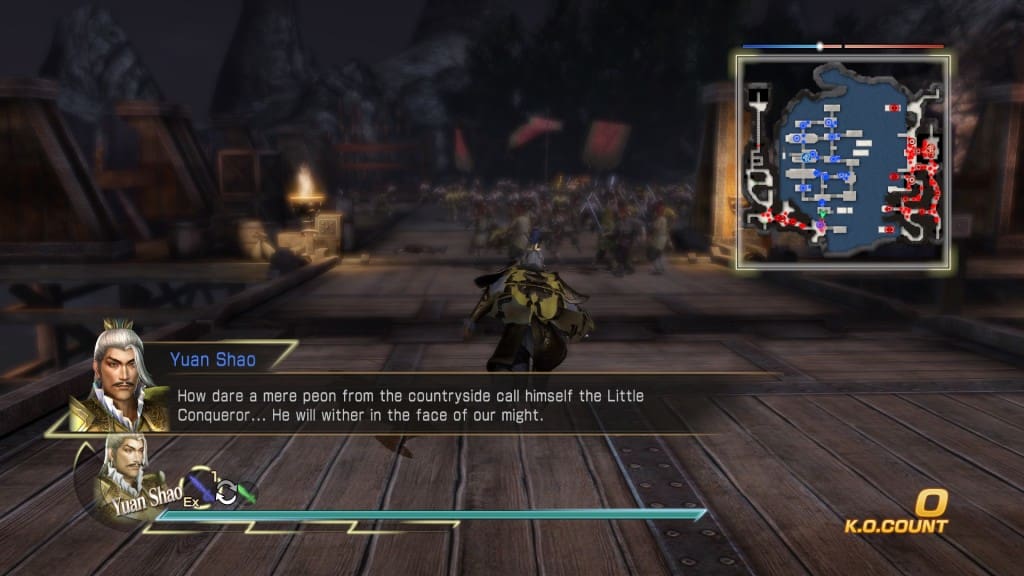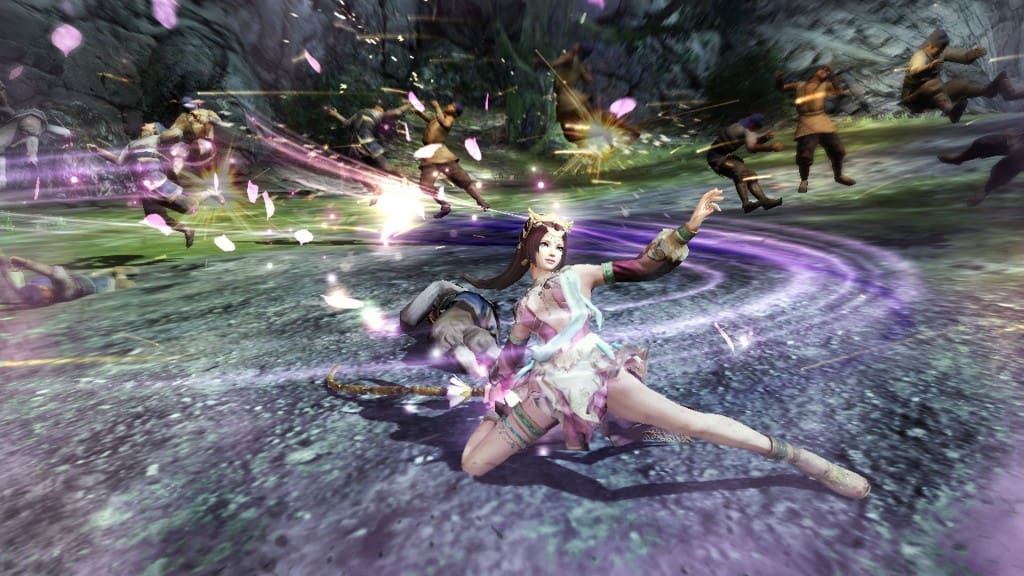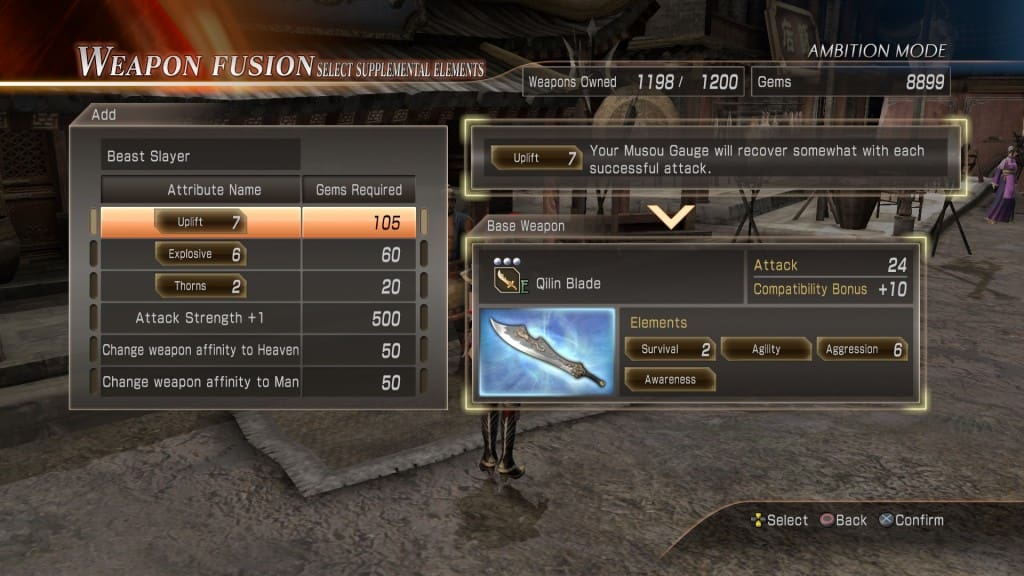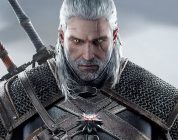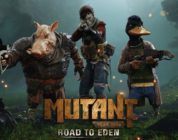1…3…23…56…75…106. My KO count went to 106 in less than 2 minutes in my first battle in Dynasty Warriors 8 Xtreme Legends Complete Edition. Dynasty Warriors lets the player be an unstoppable force when he or she is on the battlefield. Almost all the attacks in the game are meant for crowd control giving the player a sense of invincibility. The game’s high points definitely come from the game mechanics, but its low points come from the presentation of its story and its over the top voice acting. While these are some minor issues, they do not take away from the overall experience that a player will have while fighting on the battlefield.
What is great about DW8: XLCE is that there is a tutorial mode. By having the tutorial as its own mode, it doesn’t bog down a player with a tutorial level, so that when they start the story mode they can jump right into the action. The only issue with the tutorial mode, and to some extent the story mode, is that during dialogue, a text box appears and takes up a lot of room on the screen. This is all happening in real-time so the player is still being attacked.
The story mode allows the player to pick a kingdom and play as one of its commanding officers. In terms of Lu Bu’s campaign, it shows his ups and downs as he tries to conquer many lands and become emperor. Each battle has its own conditions of victory or failure. These conditions can change depending on the battle situation the player is in. That is why the player needs to pay attention to the dialogue that takes place in battle, as the conditions of victory are usually explained by one of the player’s officers.
The highlight of each battle is the fighting. Each officer has his or her own unique style of fighting. While their set moves are unique, so are they weapons they use. Most of these attacks have a wide coverage allowing for crowd control. This is important because most of the fights are full fledged battles, meaning the enemies come out in waves. The player can be engulfed by hundreds of enemies at once and has to fight his or her way out. If a player finds themselves in trouble then he or she can use a musou attack, which makes the player invincible for a bit while they unleash a power attack. This allows the player to even out the playing field or cause massive damage to an opposing officer. There is a more devastating attack called a rage attack, which is the greatest form of crowd control. Once a player fills up their rage meter they can enter rage mode. Once in rage mode they can hold down the rage attack button and unleash a numerous amount of attacks until their rage meter is depleted. The player can move around and mow down countless enemies making them a human bulldozer.
Most players might find that the soldiers are easy and do not offer much of a challenge. That is where the opposing officers step in. They are a lot stronger than the soldiers on the field. They have attacks that can cause a lot of damage to the player and can unleash combos that will leave the player helpless until the opposing officer is finished. When a player fights an officer there could be an icon over the officer’s head. One of them is a red triangle with an exclamation point, which means the player is at a disadvantage. The second is at a triangle made up of blue fragments, which means the player is at an advantage. This corresponds to the affinity that the player attaches to their weapon. The player is granted two weapons and can pick from three affinities, Earth, Heaven, and Man, for each weapon. So if player fights an officer with an exclamation point above their it mean their affinity is weaker and should change their weapon, assuming that their second weapon has a different affinity from their first. This adds another layer of complexity and forces the player to pay attention to detail, because if the opposing officer has the advantage they can unleash a powerful attack. But if the player has the advantage and depletes the opposing officers blue fragments, then the player can unleash a storm rush, which is a fury of attacks that engulfs the opposing officers and anybody else that is in the near vicinity. The game becomes harder when more than one officer attacks the player. This is where storm rushes, musou, and rages attacks become very important as they can give the player the upper hand.
While the game mechanics are solid for the most part, there are a few details that might cause players frustration. For the most part, the free form cameras is good, allowing the player to move the camera to any angle they see fit. The problem with this is that it becomes another thing to worry about when the player is in battle. While the player is in a heated fight with an enemy, they may receive a cheap hit from the back because the camera had a blind spot. This forces the player to keep the camera on a constant swivel. While the game does a good job of dealing with many enemies, it can be hard if you are trying to attack a specific enemy. This becomes relevant when a player is facing two or more officers and is trying to attack the one they have an advantage over.
The highlight of the game is Ambition Mode. The player has to build a stronghold to attract the emperor. The emperor is on the run and is seeking protection; this is where the player’s stronghold comes into play. When the player finishes the tutorial for Ambition Mode he or she has three facilities at his or her disposal: the blacksmith, the teahouse, and the barracks. The blacksmith allows the player to build other facilities; the teahouse provides food for the player, which will add a bonus effect on the player in battle; the barracks houses the player’s allies, which can be sent out to search for gold, materials, or other allies. Fame adds notoriety to the village, which will attract the emperor. In order to get materials, allies, and fame, the player has to engage in different types of battles. A skirmish is a small-scale battle that allows players to pick up materials to rank up their facilities while Great Battles are large-scale fights that allow players to recruit allies. Unconditional battles allow a player to gain fame. If a player chooses to do a succession of battles he or she can enter a Duel, which allows a player to recruit famous officers and win camp symbols and decoration that he or she can display in the village.
The story itself is based on a novel called Romance of Three Kingdom, which is loosely based on the wars that took place after the fall of the Han Dynasty. The story is interesting and the game does exaggerates some the events, which works for the game, but it is the way the story is told that makes it fall flat. Most of the story is told through text on a loading screen when the player is waiting for the next battle. If the player does not read this they will not understand why they are heading into battle. There are cut scenes in the game but they are short and barely tell much of the story. The voice acting is terrible; it feels over the top. It has a very campy feeling, and the actors are trying too hard to deliver their lines. This is especially true when it comes to Lu Bu’s voice actor. It sounds like he is constantly shouting, and at times it does not sound natural. The presentation of the story and the voice acting are the low points of game. While some players might find the voice acting horrible, it does not detract from the gameplay.
The soundtrack for the game is mostly hard rock, which sets the tone of the game. It gets the player amped and energized when the battles start. It sets the mood well. The environments are varied but it is the winter settings that are truly breathtaking. The graphics on the PS4 are slightly improved than that of the PS3, but either way, it is a gorgeous game with ever-changing environments for each battle.
Pros:
- With all the modes and difficult setting, the games has a high replay value.
- Tutorial mode allows the player to learn the key game mechanics in the game, without the need of tutorial levels in the campaign.
- The player has a sense a power while playing but the game manages to still be a challenge.
Cons:
- Voice acting is campy and over the top.
- A player can receive cheap hits from the back if they are not constantly moving the camera.
- The presentation of story is not thrilling, most of the story comes in the text during the loading screen.

